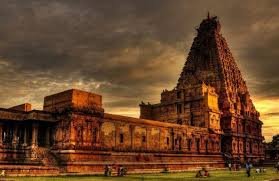Temple Tourism : A Necessity for Survival


What is special about a Temple visit, apart from offering prayers, one might ask. While Christians visit the Church every Sunday and take their kids for their Catechism classes, Muslims take their sons to the mosque every Friday, when do we take our children to visit our places of worship? Only on some occasional festival or an occasional special day? Earlier the Mandirs weren’t just for the occasional visit, they were at the heart of the community living around it but over time, the relevance of the Mandirs has lessened and they aren’t as central as they used to be.
Pilgrimages are for the elderly and vacations are now to beautiful resorts, so how do we connect our children to our past, to our ancient heritage? There is so much beauty in the old temples and so much wondrous knowledge that can fill us and the children with pride and respect for our glorious past and our ancestors. A Hindu revival isn’t possible without inculcating a sense of pride in every Hindu heart.
The huge Nandi and the capstone of Brihadeeswara Temple, the ancient mysteries of Puri Dhaam, the timelessness of the Meenakshi Amman Temple, the joy of seeing the Shivling made by Mata Sita and Hanuman ji, the marvel of the Kailasha Temple, even a single visit to any of these temples can give an idea of the grandeur of our past and the deep Bhakti of our ancestors. Each of these temples and the millions others are like devotional songs carved in stone, passing on the message to successive generations.
The temples also act as a reminder of our history. At Brihadeeswara Temple, I learnt about the Tanjore Marathas and saw the huge gate erected by them to keep the temple safe from invaders, learnt about the advancements under the Chola kings. At Kashi Vishwanath, I witnessed the loneliness of Nandi and the remnants of the temple with Gyanvapi mosque standing over it, a grim reminder of what we lost. At Somnath Temple, I realized the indomitable spirit of our land and at Dwarka, I was overwhelmed by being at the place where Bhagwan Krishna himself ruled. Seeing the Ram Setu with my own eyes, made me realize that Ramayana is not just an epic, it is our history.
It was in our travels to temples deep inside Tamil Nadu that I realized how our religion binds us all in one thread, we don’t dress the same, eat the same or even speak the same language but we worship the same Gods with the same reverence and that’s what binds us together as a nation. There can be no Bharat without Sanatana Dharama and there can be no Sanatana Dharama without having a deep respect for our past and shared history.
The temple tourism can also help us rise above the language divide which is being built upon by forces inimical to Bharat. It will also help us in improving tourism and infrastructure in our country, bring prosperity to all parts of our country and help the Dharmic vendors running small shops outside the temples.
So let us all take a pledge that we will visit at least one ancient temple a year with our children.
Jai Bharat!
DISCLAIMER: The author is solely responsible for the views expressed in this article. The author carries the responsibility for citing and/or licensing of images utilized within the text.
